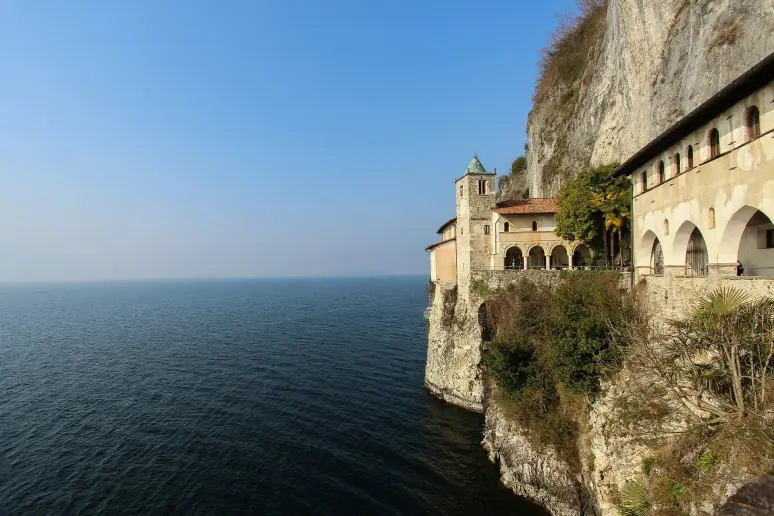
Your request has been sent successfully. We have sent you a confirmation email.
Login
Register
Visit to the Hermitage of Santa Caterina in the province of Varese

The Hermitage of Santa Caterina is an ancient monastery hosted by the municipality of Leggiuno, situated in a prominent location on the coast of Lake Maggiore.
The monastery is entirely set in the rock and is undoubtedly one of the most unique and distinctive locations in the entire province of Varese, capable of capturing the attention of any visitor.
The Hermitage has a long history of conquests and reconstructions, which have resulted in its current appearance. Some of the original buildings have been preserved, including the small chapel constructed by Alberto Besozzi.
The monastery of Santa Caterina is an incredible place of worships for those who live nearby. The monastery's proximity to Lake Maggiore and the surrounding natural beauty make it an ideal setting for spiritual reflection, offering its visitors a sense of being close to paradise.
How to reach the Hermitage
While the Hermitage of Santa Caterina may appear to be a challenging destination, it is fully accessible to all visitors, with minimal effort required.
There are two main options available when accessing the Hermitage of Santa Caterina: the staircase, which is located in the centre of Quicchio, or the lift, placed within the rock formation.
The panoramic staircase is an invaluable asset, offering unparalleled views of the surrounding landscape and the lake below.
Please be aware that parking is available at Quicchio, from where you can proceed on foot along the slope. Upon reaching the summit, you will find the effort was worthwhile.
The history of the monastery
The first phase of construction on the Hermitage, which comprises the ancient chapel, commenced in 1170 under the direction of Alberto Besozzi. This individual, a shipwrecked merchant situated on the shores of Lake Maggiore, had pledged to Saint Catherine that in the event of survival, he would dedicate his entire life to prayer.
He was behind the construction of the small original chapel as a gesture of gratitude to the saint, which formed the nucleus of the entire monastic complex.
Construction of the monastery commenced approximately a century later, with the addition of the two churches dedicated to Santa Maria Nova and San Nicolao. The monastery was initially under the control of the Dominican order, then the Ambrogiani and subsequently the Carmelites.
Each order contributed to the development of the complex, enhancing its external and internal appearance through the introduction of their own history and traditions.
A number of landslides have caused damage to a section of the original Hermitage, necessitating a programme of reconstruction.
Interior and exterior
The Santa Caterina complex consists of four chapels, each dedicated to a specific saint. The last chapel, the fifth and smallest of the complex, houses the remains of Alberto Besozzi, who initiated the construction project.
The interior of the church features a notable collection of artwork by renowned artists.
The stained glass windows and the large Neapolitan organ were created by Domenico Antonio Rossi, who played an active role in the decoration of the premises.
It would be remiss not to mention the pictorial works, including "Santa Caterina buried by angels" and the altarpiece representing the mystical marriage between the saint and Alberto Besozzi, both which were created by Giovanni Battista de Advocatis.
The architectural style of the exterior is characterised by a portico with four round arches, in the Renaissance style. The entire portico, probably built in the early 1500s, features the remains of a significant fresco created by one of Bernardino Luini's sons.
The fresco features a number of recognisable figures, including St. Nicholas, St. Catherine, St. Mary Magdalene and St. Peter.
Campsites in the area


Camping Röse

Camping Village Conca d'Oro

Camping Orta

Camping Valle Romantica

Camping Italia Lido

Camping Internazionale Paradis

Camping Residence Campagna

Camping Solcio

Lagocamp-Parkcamping Maccagno
TOPCAMPING s.r.l. - Via del Brennero 97 - 38121 TRENTO (TN) - P.IVA IT 02249520228
© 2025 All Rights Reserved.






